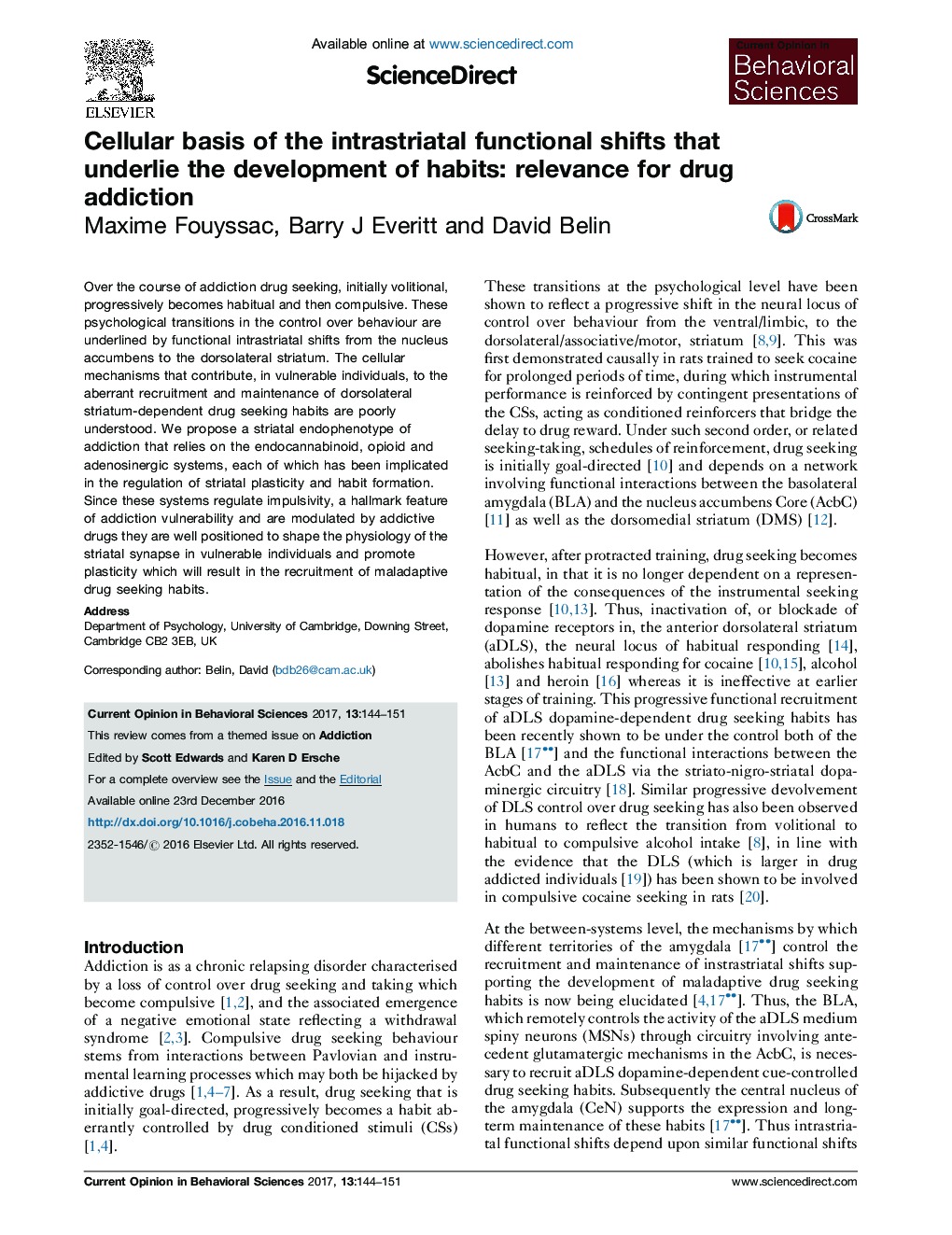| کد مقاله | کد نشریه | سال انتشار | مقاله انگلیسی | نسخه تمام متن |
|---|---|---|---|---|
| 6260332 | 1613077 | 2017 | 8 صفحه PDF | دانلود رایگان |
- Development of drug seeking habits depends upon intrastriatal functional shifts.
- Endocannabinoid, opioid and adenosinergic systems control striatal plasticity.
- These systems regulate habit formation and the underlying intrastriatal transitions.
- We propose a between-systems endophenotype of vulnerability to addiction.
Over the course of addiction drug seeking, initially volitional, progressively becomes habitual and then compulsive. These psychological transitions in the control over behaviour are underlined by functional intrastriatal shifts from the nucleus accumbens to the dorsolateral striatum. The cellular mechanisms that contribute, in vulnerable individuals, to the aberrant recruitment and maintenance of dorsolateral striatum-dependent drug seeking habits are poorly understood. We propose a striatal endophenotype of addiction that relies on the endocannabinoid, opioid and adenosinergic systems, each of which has been implicated in the regulation of striatal plasticity and habit formation. Since these systems regulate impulsivity, a hallmark feature of addiction vulnerability and are modulated by addictive drugs they are well positioned to shape the physiology of the striatal synapse in vulnerable individuals and promote plasticity which will result in the recruitment of maladaptive drug seeking habits.
Journal: Current Opinion in Behavioral Sciences - Volume 13, February 2017, Pages 144-151
